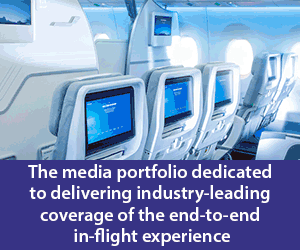To comply with social distancing rules and overcome travel restrictions, LSG Group is exploring the potential use of Virtual Reality (VR) and Augmented Reality (AR) during workshops when introducing concepts and products to its clients in the near future.
In order to bring dishes, trays and in-flight equipment into virtual reality, they must be professionally illuminated and photographed. From an elaborate main course to a simple bread roll, every single component is captured on a turntable up to 400 times in 10k resolution. These composite shots create a detailed digital image that looks photorealistic in virtual space. “In addition to digitising existing products, 3D prototypes of non-food products that don’t even exist yet can be created,” said Dr. Jan Christoph Meyer, Head of Global Product & Service Development at the LSG Group.
Virtual presentations can be conducted through VR glasses, controllers and other equipment provided to guests, which will help them navigate through the presentation room. Where physical interaction is not possible, tool like Microsoft Teams or Zoom can be used.
Communication in VR is also possible as each participant is given an avatar through which he or she is visible to the other people in the room. This virtual twin can even carry things around, label whiteboards and sticky notes. It can also interact with the other participants and invite them to a private conversation in a separate room.
A smartphone or tablet can be used for augmented reality via a corresponding app such as Instagram or Facebook.
According to Robin Sippel, Head of Global Procurement Digitalisation, Data Management & Tools., VR and AR are not a substitute for real” product presentations. “We rather see the tool as a supplement to a conversation when touching, smelling and tasting do not play a central role. Of course, these are things that cannot be simulated even with the best 3D technology. At least not yet, I should perhaps say.”






